Common Grades Of Aluminum
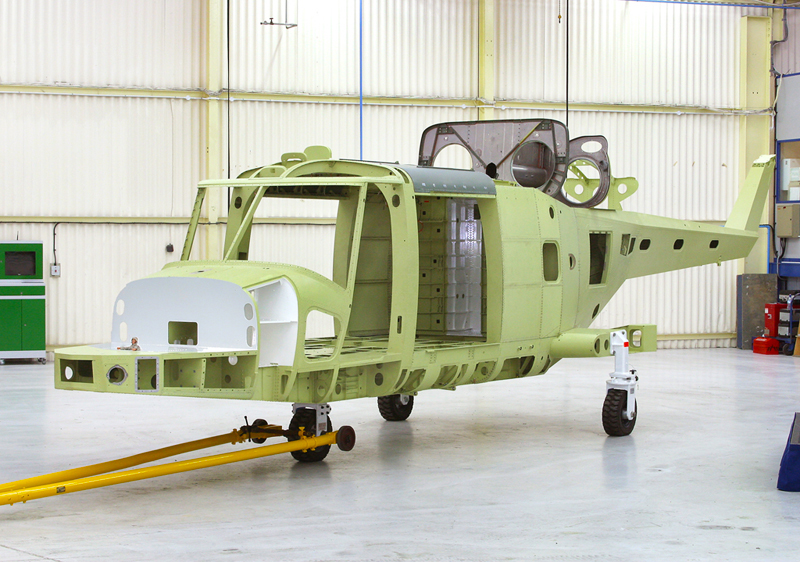
Duralumin (also called duraluminum, duraluminium, duralum, duralium or dural) is the trade name of one of the earliest types of age-hardenable aluminium alloys. Its use as a trade name is obsolete, and today the term is mainly used to describe aluminium–copper alloys, designated as the 2000 series by the International Alloy Designation System (IADS).
Aluminum is the American spelling and aluminium is the British spelling for this ductile, malleable silver-white metal. In 1812, its discoverer, Sir H. Davy, first called the metal alumium but then modified the word and finally settling on aluminium in 1812.
READ MORE: about the naming and discovery of aluminium here.
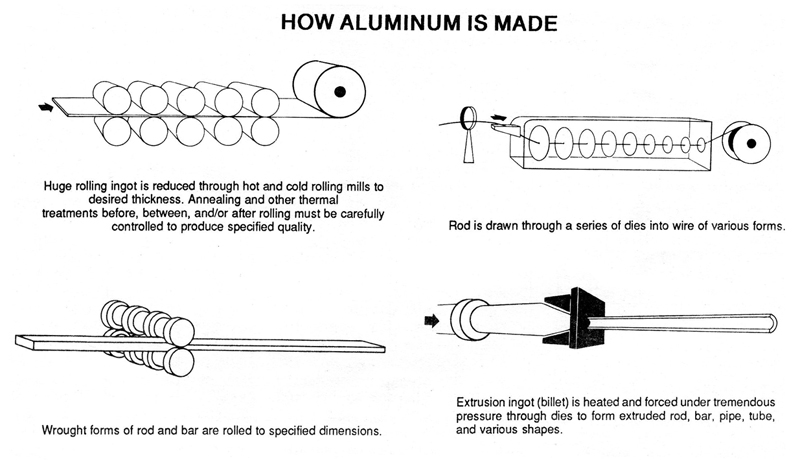
1000 Grade Aluminum
This grade is commercially pure aluminum. It is soft and ductile and has excellent workability. It is ideal for applications involving intricate forming because it work hardens more slowly than other alloys.
It is the most weldable of aluminum alloys, by any method. It is non-heat treatable. It has excellent resistance to corrosion and is widely used in the chemical – and food processing industries. It responds well to decorative finishes which makes it suitable for giftware.
Applications: kitchenware, giftware, decorative trim, intricate formed parts. 2011 is the most free-machining of the common aluminum alloys. It also has excellent mechanical properties. Thus, it is widely used for automatic screw machine products in parts requiring extensive machining.
2011 Grade Aluminum
2011 aluminum combines excellent machinability and high strength with the result that it is one of the most widely used alloys for automatic screw machine work, Its strength is slightly less than that of 2014. It is a tough, ductile alloy suitable for heavy-duty structural parts.
2024 Grade Aluminum
This is one of the best known of high strength aluminum alloys. With its high strength and excellent fatigue resistance, it is used to advantage on structures and parts where good strength-to weight ratio is desired.
It is readily machined to a high finish. It is readily formed in the annealed condition and may be subsequently heat treated. Arc or gas welding is generally not recommended, although this alloy may be spot, seam or flash welded.
Since corrosion resistance is relatively low, 2024 is commonly used with an anodized finish or in clad form (“Alclad”) with a chin surface layer or high purity aluminum.
Applications: Aircraft structural components, aircraft fittings, hardware, truck wheels and parts for the transportation industry.
3003 Grade Aluminum
This is the most widely used of all aluminum alloys. It is essentially commercially pure aluminum with the addition of manganese which increases the strength some 20% over 1100.
Thus, it has all the excellent characteristics of 1100 with higher strength. It has excellent corrosion resistance. It has excellent workability and it may be deep drawn or spun, welded or brazed. It is non-heat treatable.
Applications: cooking utensils, decorative trim, awnings, siding, storage tanks, chemical equipment.
5005 Grade Aluminum
This alloy is generally considered to be an improved version of 3003 – It has the same general mechanical properties as 3003 but appears to stand up better in actual service. It is readily workable. It can be deep drawn or spun, welded or braised.
It has excellent corrosion resistance. It is non-heat treatable. It is well suited for anodizing and has less tendency to streak or discolor.
Applications: same as 3003.
5052 Grade Aluminum
This is the highest strength alloy of the more common non-heat treatable grades. Fatigue strength is higher than most aluminum alloys. In addition this grade has particularly good resistance to marine atmosphere and salt water corrosion.
It has excellent workability. It may be drawn or formed into intricate shapes and its slightly greater strength in the annealed condition minimizes tearing that occurs in 1100 or 3003.
Applications: Used in a wide variety of applications from aircraft components to home appliances, marine and transportation industry parts heavy duty cooking utensils and equipment for bulk processing of food.
5083 & 5086 Grade Aluminum
For many years there has been a need for aluminum sheet and plate alloys that would offer, for high strength welded applications, several distinct benefits over such alloys as 5052 and 6061.
Some of the benefits fabricators have been seeking are greater design efficiency, better welding characteristics, good forming properties, excellent resistance to corrosion and the same economy as in other non-heat-treatable alloys.
Metallurgical research has developed 5083 and 5086 as superior weldable alloys which fill these needs. Both alloys have virtually the same characteristics with 5083 having slightly higher mechanical properties due to the increase of the manganese content over 5086.
Applications: Unfired pressure vessels, missile containers heavy-duty truck and trailer assemblies, boat hulls and superstructures, etc.
6061 Grade Aluminum
This is the least expensive and most versatile of the heat treatable aluminum alloys. It has most of the good qualities of aluminum. It offers a range of good mechanical properties and good corrosion resistance. It can be fabricated by most of the commonly used techniques.
In the annealed condition it has good work-ability. In the T4 condition fairly severe forming operations may be accomplished. The full T6 properties may be obtained by artificial aging.
It is welded by all methods and can be furnace brazed. It is available in the clad form (“Alclad”) with a thin surface layer of high purity aluminum to improve both appearance and corrosion resistance.
Applications: This grade is used for a wide variety of products and applications from truck bodies and frames to screw machine parts and structural components. 6061 is used where appearance and better corrosion resistance with good strength are required.
7075 Grade Aluminum
This is one of the highest strength aluminum alloys available. Its strength-to-weight ratio is excellent and it is ideally used for highly stressed parts.
It may be formed in the annealed condition and subsequently heat treated. Spot or flash welding can be used, although arc and gas welding are not recommended. It is available in the clad (“Alclad”) form to improve the corrosion resistance with the over-all high strength being only moderately affected.
Applications: Used where highest strength is needed.
Working With Aluminum
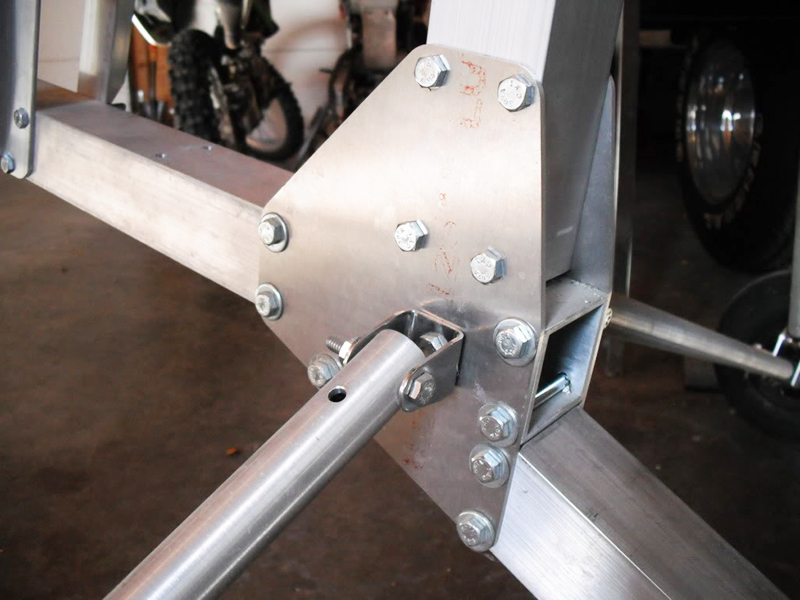
Aluminum is one of the world’s most plentiful metals – it is made from dirt! There are small traces of aluminum in practically every handful that you might pick up, but the only practical source is bauxite ore which contains 45 to 60 percent aluminum oxide.
Ground and dried bauxite is mixed with caustic soda and heated to release the aluminum oxide in the form of a liquid. After impurities have settled and been removed the solution is dehydrated which produces a white powdery substance called sodium aluminate or alumina (50% aluminum and 50% oxygen). The alumina is then smelted to produce pure aluminum which is cast into ingots of billets. Further processing takes place to produce either pure aluminum or a number of alloys.
A four digit system (1XXX through 9XXX) is utilized universally throughout the aluminum industry to identify the many grades and alloys. The first digit designates the alloy group according to the major alloy elements as indicated below.
ALLOY GROUPS
-
1XXX – 99% aluminum (no major alloy element)
-
2XXX – Copper
-
3XXX – Manganese
-
4XXX – Silicon
-
5XXX – Magnesium
-
6XXX – Magnesium & silicon
-
7XXX – Zinc
-
8XXX Other elements
-
9XXX – Unused series
The second digit indicates alloy modification. If it is zero it indicates the original alloy. The last two digits simply indicate the different alloys in the group.
TEMPER & HARDNESS
The temper and harness designations utilize an alphabetic suffix with two or three numerical digits following. As an example H1 means strain hardened only; H2 indicates strain hardened, then partially annealed; H3 denotes that the alloy is strain hardened and then stabilized.
The temper digit is indicated by the second digit as follows:
-
2-1/ 4 hard
-
4-1/ 2 hard
-
6 – 3 / 4 hard 8 – full hard
-
9 – extra hard
Heat treatable alloys are designated by a -F (as fabricated); -O (annealed); and –T (heat treated).
The letter “T” is always followed by one or more digits that indicate the method used to establish the stable tempers.
The various designations are as follows:
-
–T3 Solution heat treated, then cold worked.
-
–T351 Solution heat treated, stress-relieved stretched, then cold worked.
-
–T36 Solution heat treated, then cold worked (controlled).
-
–T4 Solution heat treated, then naturally aged.
-
–T451 Solution heat treated, then stress-relieved stretched.
-
–T5 Artificially aged only.
-
–T6 Solution heat treated, then artificially aged.
-
–T61 Solution heat treated, stress-relieved (boiling water quench), then artificially aged.
-
–T651 Solution heat treated, stress-relieved stretched, and then artificially aged (precipitation heat treatment).
-
–T652 Solution heat treated, stress-relieved by compression, then artificially aged.
-
–T7 Solution heat treated, cold worked, then stabilized.
-
–T8 Solution heat treated, cold worked, then artificially aged.
-
–T81 Solution heat treated, cold worked (controlled), and then artificially aged.
-
–T851 Solution heat treated cold worked and stress relieved stretched, then artificially aged.
-
–T9 Solution heat treated and artificially aged, cold worked.
-
–T10 Artificially aged, then cold worked.
ALUMINUM ALLOYS
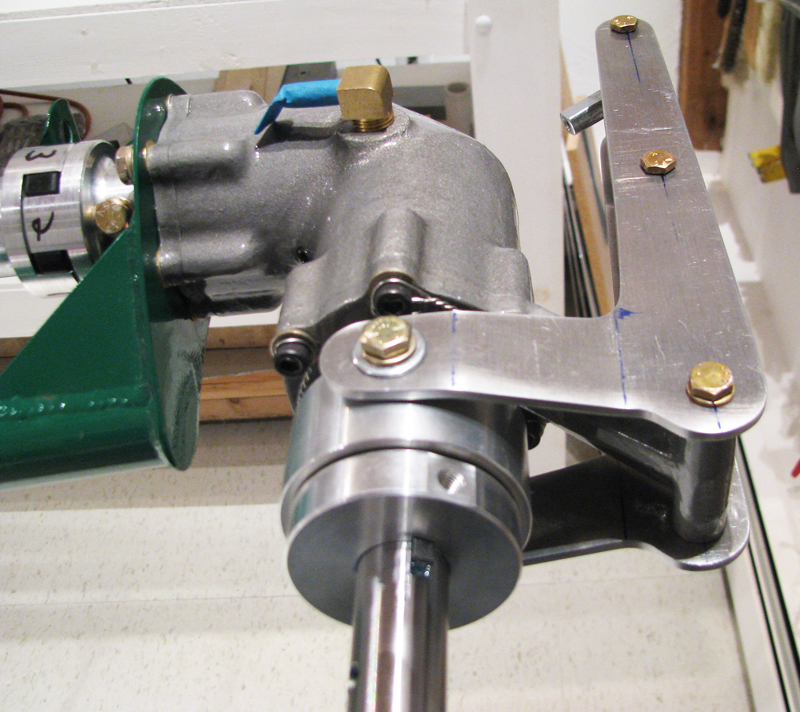
There are many different aluminum alloys which the helicopter homebuilder should be familiar with in order to construct a safe airframe.
Description of the various alloys are as follows:
1100 – This grade is pure aluminum. It is soft, ductile, and has excellent workability. It is suitable for intricate forming and is the most weldable of aluminum alloys. It is non heat-treatable and has good resistance to corrosion. 2011 – This alloy has excellent mechanical properties and is widely used for automatic screw machine products.
2014 & 2017 – The 2017 alloy combines excellent machineability and high strength which makes it very suitable for automatic screw machine work. It is a tough, ductile alloy which is suitable for heavy duty structural parts. Strength of 2017 is slightly less than 2014.
2024 – One of the best non heat-treated, high strength alloys with excellent fatigue resistance which is used extensively in aircraft construction. It is readily formed in the annealed condition and may be heat treated.
Welding is generally not recommended. Applications include aircraft structural components, aircraft fittings and hardware, wheels and parts for the transportation industry.
3003 – The most widely used of
aluminum alloys, it is pure aluminum with manganese added which increases the strength approximately 20% over 1100 (pure aluminum). It has good corrosion resistance and with its excellent workability it may be deep drawn, spun, welded, or brazed.
An aircraft application is prop spinners. 5005 – An improved version of 3003 with the same general mechanical properties but it seems to hold up better in actual service. It is well suited for anodizing and has less tendency to streak or discolor. Same applications as 3003.
5052 – The highest strength alloy of the non heat-treatable grades. Fatigue strength is higher than most other alloys. Good resistance to marine atmosphere and salt water corrosion. Applications range from aircraft components to home appliances, marine and transportation industry parts.
5083 & 5086 – Very suitable for high strength, welded applications such as unfired pressure vessels, missile containers, heavy duty truck and trailer assemblies, boat hulls and superstructures.
6061 – The least expensive and most versatile of the heat treatable alloys with a wide range of good mechanical properties and corrosion resistance. It can be welded by all methods and can be furnace brazed. It is available in Alclad (a thin coat of pure aluminum) which improves corrosion resistance.
Applications – include truck bodies and frames, screw machine parts and structural components. 6061 alloy is used extensively in bolt-together aircraft airframes.
6063 – This grade is commonly referred to as the architectural alloy. It has high tensile properties, excellent finishing characteristics and good resistance to corrosion.
Applications – include window and door frames, store fronts, and various trim items. 6063 is not suitable for aircraft construction since it does not have good fatigue resistance.
7075 – One of the highest strength alloys available 7075 is ideally suited for high stress parts and is commonly used in aircraft structures. Arc or gas welding is not recommended.
It is available in “Alclad” which improves corrosion resistance with only a minor reduction in strength. Use where highest strength is needed such as bearing housing and retention plates in rotor hubs.
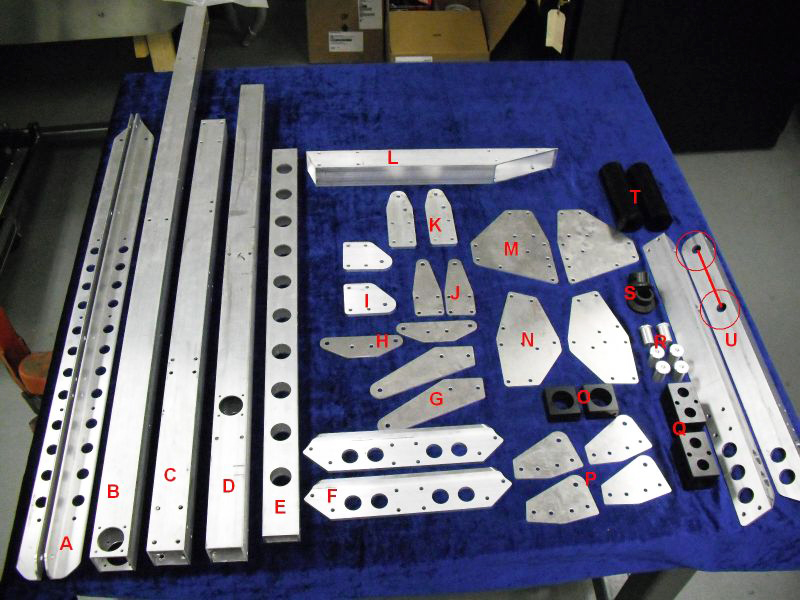



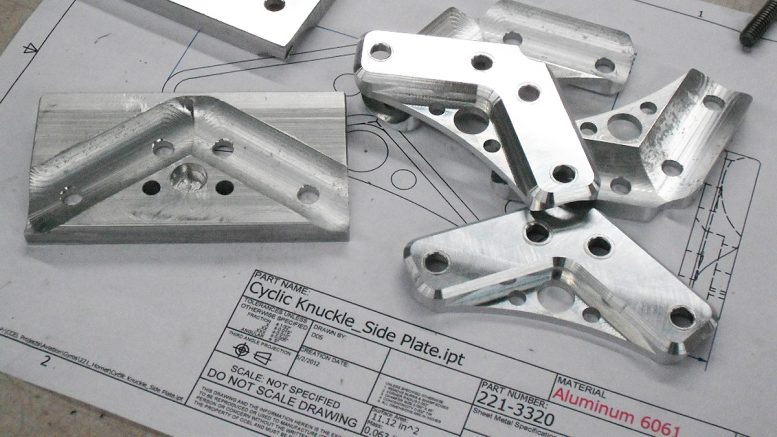
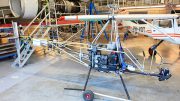
Be the first to comment on "Aluminum – The Most Common Grades"